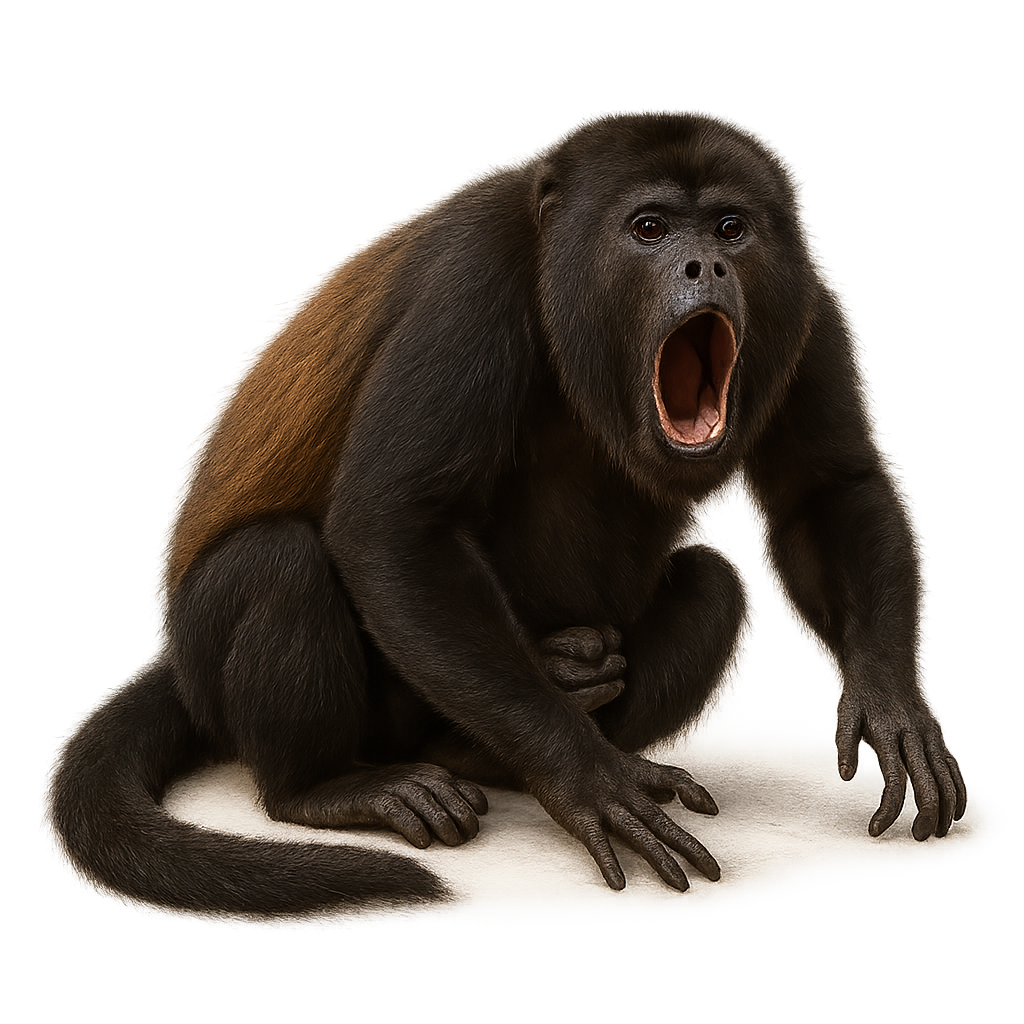Your wildlife photography guide.
Explore the mantled howler in detail, study its behavior, prepare your shots.
Where to observe and photograph the mantled howler in the wild
Learn where and when to spot the mantled howler in the wild, how to identify the species based on distinctive features, and what natural environments it inhabits. The WildlifePhotographer app offers tailored photography tips that reflect the mantled howler’s behavior, helping you capture better wildlife images. Explore the full species profile for key information including description, habitat, active periods, and approach techniques.
Mantled Howler
Scientific name: Alouatta palliata

IUCN Status: Least Concern
Family: ATELIDAE
Group: Mammals
Sensitivity to human approach: Suspicious
Minimum approach distance: 10 m
Rut period: October to November
Gestation: 180-194 jours
Births: April to May
Habitat:
Tropical forests, rainforests, mangroves
Activity period :
Primarily active during the day, with peak activity in the morning and late afternoon.
Identification and description:
The Alouatta palliata, commonly known as the mantled howler, is an arboreal primate primarily found in the tropical forests of Central and South America. Recognizable by its powerful howl that can be heard for miles, it plays a crucial role in seed dispersal, aiding forest regeneration. This monkey has a black coat with a distinctive golden mane. It lives in hierarchical social groups composed of several males and females. Howler monkeys are primarily herbivorous, feeding on leaves, fruits, and flowers. Their vocal behavior is essential for intra-group communication and territorial defense. Although their population is stable, deforestation poses a threat to their natural habitat.
Recommended lens:
400 mm – adjust based on distance, desired framing (portrait or habitat), and approach conditions.
Photography tips:
To photograph the Alouatta palliata, it is advisable to use a telephoto lens of at least 400mm to capture detailed images without disturbing the animal. Since howler monkeys are primarily active during the day, it's best to photograph them early in the morning or late afternoon when the light is soft. Be patient and discreet to observe their natural behavior. Use a tripod to stabilize your camera and get sharp shots. The tropical forest provides a rich backdrop of colors and textures, so take advantage of it to include the environment in your compositions.
The WildlifePhotographer App is coming soon!
Be the first to explore the best nature spots, track rutting seasons, log your observations, and observe more wildlife.
Already 1 432 wildlife lovers subscribed worldwide

